Are flowers edible?
Yes, some are and they are wonderful.
Why limit ourselves to greens when we can have red, blue, yellow and violet and add a rainbow to our gastronomic fare?
Growing flowers is a fun activity that is an important component to your garden ecotherapy routine, also helps to limit our carbon footprint. Besides offering beauty to the surroundings and, yes, you can eat them.
Many relatives from my father’s side own flower nurseries and greenhouses. So, my childhood had a few evenings where uncles and aunts debated the virtues of flowers and filled the air with unpronounceable scientific names.
Thus, predictably, I’ve devoured flowers. Fried. Steamed. Raw. And there’s so much more left to sample.
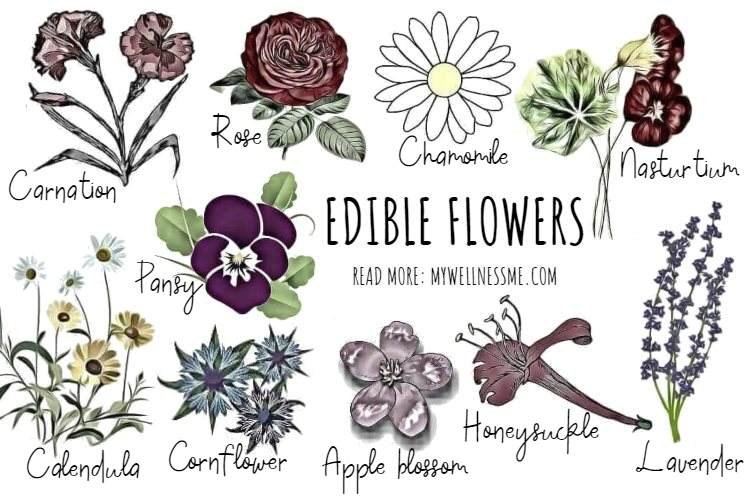
The following section details a list of 60+ edible flowers.
Popular Edible Flowers

- Tulip (Tulipa spp)
Sweet, pea-like flavor. Use petals for garnishing sandwiches. - Pot Marigold (Calendula officinalis)
Light peppery taste with a slight tangy flavor. Use petals for garnishing soups, salads and rice dishes. Only petals are edible. - Carnation (Dianthus caryophyllus)
Floral, clove-like taste. Ideal for decorating cakes and garnishing soups and salads. - Garland Chrysanthemum/Crown Daisy (Chrysanthemum coronarium, now known as Glebionis coronaria)
Tangy, peppery, slightly bitter flavor. Use petals for garnishing salads, leaves for adding flavor to vinegar. Only petals are edible. - Cornflower (Centaurea cyanus)
Sweet and spicy, clove-like flavor. No fragrance. Use as colorful garnish on its own or with other edible flowers. - Sweet Rocket/Dame’s Rocket (Hesperis matronalis)
Quite bitter. Complements poultry and fish dishes. Also used to flavor tea. Use leaves before the plant flowers. - Rocket (Eruca vesicaria subsp. Sativ, Diplotaxis muralis)
Both flowers and leaves are spicy and peppery. Use as garnish for rice and salads. - Daylily (Hemerocallis)
Slightly sweet and mild vegetable flavor. Use petals for decorating desserts and cakes. Other lilies can be poisonous. - Fuchsia (Fuchsia spp)
Blooms have slightly acidic flavor, berries can be peppery or sweet. Garnish fruit salads and put blooms in jellies. - Gladiolus (Gladiolus dalenii)
Flowers with anthers removed have little flavor. Makes wonderful containers for mousses and spreads. Use petals for salads. - Hibiscus (Hibiscus rosa sinensis)
Cranberry-like flavor with a hint of citrus. Use in salads but sparingly. Dried flowers are used to make exotic tea. - Hollyhock (Alcearosea)
Bland. Crystallized flowers are great for cakes and mousses. Remove stamen before eating. - Honeysuckle (Lonicera spp)
Distinctly sweet flavor. Can be eating directly from plant or made into syrup. Eat only flower and nectar. Berries can be poisonous. - Busy Lizzie (Impatiens walleriana)
Sweet flavor. Use for garnishing salads. - Lilac (Syringa vulgaris)
Flavor varies from bitter to fragrant. Lemony taste, slightly pungent. This is another ideal edible flower for cakes and sweets. - Marigold [Tagetes patula ( French marigold), Tagetes tenuifolia (Signet marigold), Tagetes erecta (Mexican marigold)]
Flowers and leaves have citrus to subtle spicy flavor. Very good in salads. Eat in moderate amounts. - Nasturtium (Tropaeolummajus, Tropaeolum minus)
Fresh flowers and leaves have sweet, peppery flavor. Great as garnish for casseroles and steaks. - Pansies and Violas [Viola x wittrockiana/ Viola cornuta (Pansy), Viola tricolor (Johnny jump-up), Viola x williamsiana, Viola hybrida]
Grassy, somewhat sweet flavor. Good in fruit salads and desserts. - Violets (Viola odorata)
Sweet fragrant flavor. Good in salads or to embellish foods and drinks. - Perennial Phlox (Phlox paniculata)
Flowers have slightly spicy flavor. Perfect for floral salads and also for decorating cakes. Only this species of Phlox is edible. - Primrose, Cowslip, Primula, Polyanthus [Primula vulgaris (English Primrose), Primula veris (Cowslip), Primula Polyanthus (Polyanthus), Primula hybrida]
Sweet taste. Great on cakes and desserts. - Rose (Rosa)
Flavor of green apple. Tastes earthy and floral and has a slight sweetness to them. Crystallized flowers make for good cake decorations. Use petals for garnishing salads. - Scented Geraniums [Pelargoniums clorinda (Eucalyptus scented, large pink), Pelargonium × fragrans (Nutmeg scented geranium), Pelargonium graveolens (Sweet scented geranium), Pelargonium tomentosum (Peppermint scented geranium), Pelargonium quercifolia (Oakleaf scented geranium)]
Leaves have citrus fragrance. Sprinkle on desserts. - Sunflower (Helianthus annuus)
Bittersweet flavor. Kernels inside seeds can be eaten raw. The unopened flower buds can be steamed like artichokes. - Tuberous Begonia (Begonia x tuberhybrida)
Light lemony taste. Crisp texture. Use petals for garnishing salads and sandwiches. Petals are edible but stems can cause reaction. - Yucca (Yucca spp)
Somewhat sweet taste with artichoke flavor. Crunchy flower is great for garnishing salads. Please note Yucca is different from yuca, a potato-like starch which is the root of the cassava plant. - Peony [Paeonia officinalis (Common peony)]
Mild sweet flavor. Add to salads. All parts of the plant are poisonous if ingested in large doses. - Indian Lotus (Nelumbo nucifera)
Seeds have slightly sweet taste with nutty flavor. Dried flowers are used for recipes. Dried white lotus petals are used for lotus flower tea. Filled with potassium and protein so great for post-workout snack. - English Daisy (Bellis perennis)
Mild bitter flavor. Use for garnishing soups and salads and for decorating cakes. Should be avoided by those with allergies. - Dandelions (Taraxacum officinale)
Honey-like (young flowers) or bitter (mature flowers) flavor; buds are tastier. Can be eaten raw or in salads. Used for making wine.
Fruit Flowers
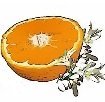
- Apple/Crab Apple blossoms (Malus domestica, Malus x robusta, Malus x zumi)
Blossoms have delicate floral flavor. Good complement to fruit dishes. Eat in moderation. - Elderberry blossoms (Sambucus nigra)
Sweet fragrance and taste. Batter and fry flowers to make fritters. - Papaya blossoms (Carica papaya)
Strong bitter taste. Use for salads or cook with potatoes (South Asian style). - Banana blossoms (Musa spp)
Bitter taste. Blossoms can be eaten raw or cooked, after removing the outer covering. - Citrus blossoms [Citrus sinensis (Orange), Citrus Limon (Lemon), Citrus latifolia and Citrus aurantifolia (Lime), Citrus × paradisi (Grapefruit), Citrus japonica (Kumquat)]
Citrus lemony flavor. Use in beverages and pastries. Don’t put too much or the smell can overpower the dish.
Herb Flowers

- Chives/Chinese Chives blossoms [Allium schoenoprasum (Chives), Allium tuberosum (Chinese Chives)]
Crunchy texture, mild onion flavor. Toss in salads, pasta, and scrambled eggs. - Onion (Welsh/Spring) blossoms (Allium fistulosum)
Onion flavor. Toss in salads or use with vegetables. - Anise Hyssop/Agastache blossoms (Agastache foeniculum)
Delicate, fragrant taste (both flowers and leaves). Add to cakes for that different flavor. Pregnant women should consult before consuming this flower. - Basil blossoms (Ocimum basilicum, Ocimum minimum, Ocimum x citriodorum)
Flavor same as the leaves, only milder. Different varieties have different flavor. Garnish salads and other dishes. - Monarda/Bergamot/ Bee Balm [Monarda citriodora (Lemon Bee Balm) subsp. Astromontana, Monarda didyma (Scarlet Bee Balm), Monarda fistulosa (Lavender Bee Balm)]
Tastes like oregano and mint. Use leaves and flower petals in fruit and other salads. Often called bergamot due to the flavor being similar to bergamot orange. - Borage/Starflower blossoms (Borago officinalis)
Petals taste like cucumber and stamens are sweet. Toss in fruit salads, garnish soups and decorate desserts. - Coriander/Cilantro blossoms (Coriandrum sativum)
Distinct herbal flavor. Sprinkle on salads and use raw as flavor diminishes when cooked. - Fennel blossoms (Foeniculum vulgare)
Mild anise flavor. Use in fish, meat and vegetable dishes. - Jasmine (Jasminum officinale)
Powerful fragrance. Use on rice and salads. Jasmine officinale is edible but other species can be poisonous. - Lavender (Lavandula angustifolia, Lavandula multifida, Lavandula stoechas)
Woody and earthy taste. Color and smell lends itself to many sweet dishes. Very versatile. - Mint/ Pennyroyal Mint [Mentha x piperita (Peppermint), Mentha pulegium (Pennyroyal), Mentha suaveolens (Apple mint), Mentha x gracilis,(Ginger mint), Mentha spicata (Spearmint)]
Herbal flavor and taste is similar to leaves. Great for vegetable and fruit salads and chocolate cakes. - Oregano (Origanum vulgare)
Milder version of the leaves. Great with tomato dishes and pizza. - Rosemary (Rosmarinus officinalis)
Milder version of the leaves. Good with meat, poultry and seafood. - Sage (Salvia officinalis)
Tastes similar to leaves, only more subtle. Complements salads. - Ginger blossoms (Zingiber officinale)
Ginger flavor. Petals can be eaten raw, young shoots can be cooked. - Tamarind blossoms (Tamarindus indica)
Sour taste. Popular ingredient in Indian chutneys, stews and drinks. - Chicory (Cichorium intybus)
Earthy flavor. Quite bitter. Can be eaten raw; use flower buds for pickles and flowers for salads. - Chervil (Anthriscus cerefolium)
Anise flavor. Loses flavor quickly so add at the very end and when it is at its freshest, in salads. - Chamomile [Matricaria chamomilla (German Chamomile), Chamaemelum nobile (Roman Chamomile)]
Fresh and dried flowers have slight apple flavor. Toss in salads. Also used to make herbal tea. - Angelica (Angelica archangelica)
Licorice scented. Use in fish dishes and salads. - Safflower (Carthamus tinctorius)
Chocolaty and tobacco-like flavor. Used as colorant in foods, in place of the expensive saffron. - Savory (Satureja hortensis)
Hot flavor, somewhat like thyme. Complements meat and bean dishes. - Thyme (Thymus vulgaris)
Flavor similar to leaves but milder. Sprinkle flowers over soups.
Vegetable Flowers
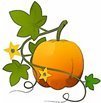
- Broccoli/ Ornamental Kale blossoms [Brassica oleracea var. italica (Broccoli), Brassica oleracea – Acephala Group (Kale)]
Mild spiciness. Great with salads or stir-fries. - Mustard blossoms (Brassica spp)
Slightly spicy and peppery. Eat raw or cook them like spinach. - Bok Choy blossoms (Brassica chinensis)
Tastes like mustard. Use in salads. - Pea blossoms (Pisum sativum)
Slightly sweet, like young peas. Add to salads. Vegetable pea flowers are edible but not sweet pea flowers which can be poisonous. - Squash/Pumpkin blossoms [Cucurbita moschata (Crookneck pumpkin), Cucurbita pepo (Field pumpkin), Cucurbita maxima (Giant pumpkin)]
Slightly sweet taste. Use on salads and scrambled eggs. Versatile. - Artichoke blossoms (Cynara scolymus)
Asparagus-like flavor when boiled. Leaves are edible and so is the flower bud before the flower blooms. Use baked leaves in Hearts of Romaine salad. - Okra blossoms (Abelmoschus esculentus)
Flowers have nutty flavor. Young flowers and seed pods can be turned into a vegetable dish.
These are just suggestions and common ways in which the flowers are used. As mentioned before, there are no rules and you can experiment freely with edible flowers.
Now for some not-so-edible flowers. In fact DO NOT ever eat them.
Poisonous Flowers

- Foxglove (Digitalis purpurea): All parts are toxic but the leaves on the upper stem are the nastiest. One bite of a leaf can cause delirium, hallucinations, convulsions, and a lot more.
- Azaleas (Rhododendron spp): These flowers contain grayanotoxins, which affect the nervous system resulting in coma or death if too much is ingested. All azaleas are rhododendrons but there are rhododendrons that are not azaleas.
- Larkspur [Consolidaaj acis (Annual delphinium), Delphinium spp]: All parts are poisonous. Symptoms include burning of mouth, acute vomiting and diarrhea, muscular spasms, convulsions, and even death. Almost all larkspur species are toxic.
- Lilies (Lilium spp): Some species are best left alone, especially Stargazer. These are poisonous flowers for cats and they can affect humans too.
- Lily of the Valley (Convallaria majalis): Effects include nausea, acute headache, and slow heart rate.
- Calla Lily (Zantedeschia aethiopica): This plant contains calcium oxalate and a small dose can cause the throat to swell accompanied by a burning sensation.
- Autumn Crocus (Colchicum autumnale): This flower contains colchicine, which systematically shuts down your vital functions. It’s fatal if you ingest too much and some liken the effects to cholera.
- Skunk Cabbage (Symplocarpus foetidus): Some parts are edible but too much of the wrong parts can be fatal through severe calcium oxalate poisoning. And yes, it smells like skunk!
- Buttercup (Ranunculus acris): Ingestion can be fatal as a result of nervous system and organ intoxication.
- Death Canvas (Zigadenus venenosus): Even ingesting a moderate amount can result in organ failure and death.
- Angel’s Trumpet (Datura innoxia): One bite of this and you can get hallucinations, delirium, diarrhea, vomiting, and eventually paralysis and death.
- Jimsonweed (Datura stramonium): Known as devil’s snare. Sucking the juices from the stems and flowers or ingesting just one seed can take you on a ride you would not want ever again.
- Common Oleander (Nerium oleander): One leaf can kill a fully grown adult. The consequences include blurred vision, bad stomach pains, irregular heartbeats, and fatal effects on the brain.
- Water hemlock (Cicuta douglasii): Plant contains cicutoxin, which can cause rapid breathing, convulsions, and coma, among other similar horrible consequences, and death. All parts contain alkaloids that are deadly even in small amounts.
- Monk’s Hood (Aconitum napellus): One bite of monkshood can be fatal. Some of the effects are numbness of mouth, vomiting, heavy breathing, paralysis, and eventually death.
- Wisteria (Wisteria sinensis): If ingested, symptoms include vomiting, diarrhea, and depression of the nervous system. Beware of the seeds. Wisteria is especially harmful to pets.
- Belladonna (Atropa belladonna): Devil’s cherries, deadly nightshade – this plant goes by many names. The berries are the worst and ingesting them can result in thirst, delirium, rashes, and coma. It can paralyze your entire body, including the heart.
- Mountain Laurel (Kalmia latifolia): The flower contains the toxin andromedotoxin that causes the heart to beat rapidly and dangerously slowly at the same time. Even honey from bees that have visited the flower is dangerous!
- Ragwort (Jacobaea vulgaris): There are at least eight known toxic alkaloids in the flowers. The toxin from the flowers can seep through the skin. Symptoms include abdominal pain, blindness, and lack of coordination.
- Veratrum (Veratrum album): Ingestion of any part of the plant can cause muscles to convulse, eventually resulting in a coma or heart attack. It may have done for Alexander the Great so no one is safe.
- Bloodroot (Sanguinaria canadensis): The flower contains the toxin sanguarine which is also an escharotic substance. In simple words, it can cause skin cells to kill themselves.
- Poinsettia (Euphorbia pulcherrima): Finally, let’s bust a myth. Poinsettias are not poisonous, at least not to the degree that they are made out to be. It would take 500 bracts of the plant to affect an average seven-year-old child.
Keep things simple…
Flowers typically have delicate taste and you don’t want them accompanied by a host of other ingredients.
They are also a good way to add color and flavor to your dishes. Flowers have a surprisingly wide range of flavor; you’ll get spicy and fragrant and many others in between.
Fun ways to use flowers
There is no law on how to eat flowers. Anyhow, here are some creative ways you can use them:
- Sprinkle them in salads for flavor and color.
- Place them in a transparent bowl and fill it with a dip.
- Freeze small flowers in ice cubes and use them in beverages.
- Use in jellies and marinades and flavored oil.
- They can be candied and make for fancy cake décor.
- Use them as containers to hold salads.
How to Crystallize Flower Petals
Ingredients:
Egg white of 1 egg
Powdered sugar
1-2 tsp water
Step 1: Mix egg white with about 1-2 teaspoons of water and whisk together.
Step 2: Use soft paintbrush to paint over a thin layer of the mixture on the petals. Ensure that every portion of the petals, front and back is coated with the mixture.
Step 3: Fully coat both sides of the petals with powdered sugar.
Step 4: leave them to dry on a tray for two days until they harden and look like little frozen blossoms.
Step 5: Use them as decor on cakes or in desserts.
A word of caution
- Don’t eat flowers you are allergic to. Pretty obvious, I know, but just wanted to put it out there. What you can do is, start with small amounts and judge if they are all right for you.
- Don’t eat blossoms that have pesticides or chemicals used on them, such as those from garden centers and florists.
- Don’t harvest flowers you find on the roadside or public areas which are constantly exposed to germs, like automobile residues. (Also don’t forget dogs like to mark their territory wherever they see fit.)
- Eat them sparingly at first; let your body get used to them before incorporating more into your dishes.
- Use the flowers immediately as flavor diminishes over time. If you must store then do so in an air tight container and store them in the fridge.
- Non-edible flowers are not garnish. You don’t want an unsuspecting guest to be devouring them right in front of your eyes.
- Have a reference ready, one you can trust, for times you are not sure if a flower is edible or not.
Growing and picking edible flowers
Is there any special way to grow edible flowers?
Not really.
You can sow most edible flowers directly into the ground. Regularly water them and remove dead ones so new flowers can grow. Further, avoid the use of animal manure four months before harvesting. And, of course, no pest control.
To get rid of pests, you can bring in beneficial insects, such as ladybugs, to prey on the more harmful bugs. Also, choose flowers that can grow in containers, like geraniums and violas; this practice saves space and lets you grow a lot more flowers.
As for the harvest, the best time to pick flowers is when they have just opened, like early mornings. At this time of the day, they are fresh and firm and have high water content.
Finally, a good practice is to harvest just a third of what’s growing and leave the rest for pollinating agents.
Cleaning, storing and preserving edible flowers
Our ancestors probably ate them straight from the plant but our stomachs are perhaps not so sturdy. Besides, only certain parts are edible with some flowers.
Here’s how you clean them:
Remove styles and stamens. Pollen affects flavor and can cause allergic reactions. Also, remove sepals except for pansies and violas.
Flowers are delicate so you can use a small brush to remove dirt or insects. Or you can gently shake them to rid of hidden pests.
After the flowers have been separated, wash them in a strainer and dry them on paper. If they dry quickly and are not exposed to direct sunlight, they tend to retain their smell and color.
Now, place the flowers atop a moist paper towel that covers a hollow container. Put the flowers in the refrigerator. Doing this should keep them from wilting. If the flowers wilt, just float them on ice water. This treatment can revitalize them.
Because they are soft and succulent, edible flowers are more likely to mold quickly and, research says, lose their anti-oxidant properties. So, have the cookbook ready and the knives sharpened when working up a delicacy!
Where to buy them
Try purchasing the flowers from local farmers. Their products are more varied and safer than what you get in commercial grocery stores. (Still, do check with them if pesticides have been used in any way.)
However, not everyone is lucky to have local farmers nearby. If you don’t then you can also order them online. In America, there are shops like Melissa’s and Gourmet Sweet Botanicals that will ship edible flowers to you overnight so you get to eat them relatively fresh.
Another noteworthy company is Farmacy in Hong Kong that offers edible flowers (among other things) to hotels and restaurants. The company will soon introduce the “mobile farm” that is, as the name suggests, a farm that can be moved anywhere.
Edible flowers over the years
In the Ancient Era, Chinese cooks were trying to find ways to incorporate them in food. Later in the Middle Ages, rose and calendula were often favored by the highest classes. The poorer sections also saw in flowers a cheap way to add some sparkle to what was normally simple meals.
What made them popular was their availability. Kings and paupers, knights and monks, all had access to them.
In fact, edible flowers have always been there in abundance. So, the practice of eating flowers was normal till the commercial food industry reared its big old head in 20th century. It was never going to give edible flowers any priority, especially since they had to be eaten the same day they were picked and grow without the use of chemicals.
Slowly, however, they are gaining traction again. And our foods are better for it.
Hope you enjoyed this list of edible flowers. What kind of edible flowers are in your garden? Do you have any ways of using them that you’d recommend?
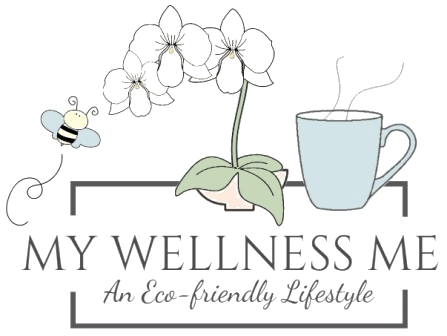
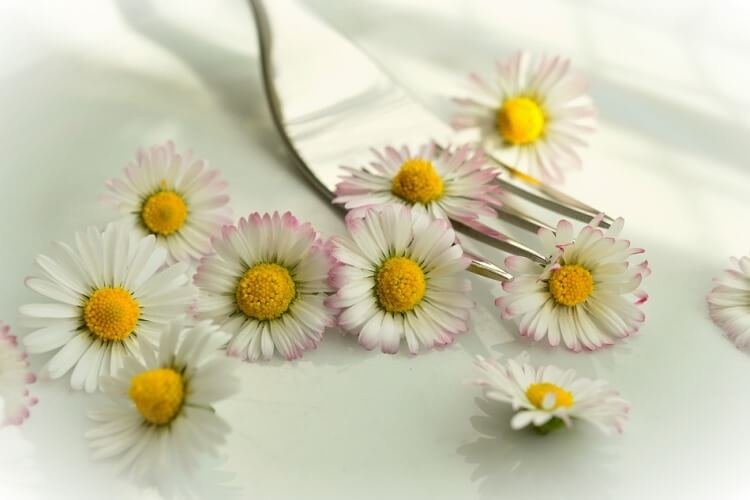
19 comments
Wow such a comprehensive lovely article. I love flowers and gardening, check out my blog about travel, flowers, gardens, mountains.
This is a wonderful post, comprehensive and full of useful information. Quite a list and very good info on the poisonous flowers. Once again, loved it!!
Thanks! 🙂
Brilliant, such a fascinating read! I’ve never bought edible flowers so this is quite a learning curve! Right up my alley ?
Thanks. 🙂
Wow….This was most informative… Edible flowers! Loved them in salad and made them look so beautiful. Thank you.
You’re welcome!
I love flowers and to me edible flowers are just perfect to add the finish touches to a meal or dessert. Flowers can make everything more beautiful. Thanks for sharing this, it’s so comprehensive. I found your post really useful.
So true. It adds everything – flavor, taste and look.
I had no idea there were so many varieties of edible flowers! Apart from the normal ones like Coriander etc but this was so informative and I learnt a lot so thank you so much for sharing! I definitely want to try some of these in my dishes
Thanks 🙂
I’ve eaten some flower (I can’t remember what it’s called) petals before! My mum tried to make fritters out a bunch of them, and they were actually good! This is such an informative read. Thank you for sharing! 🙂 x Ain
You’re welcome! 🙂
I actually had edible flowers when I went out for brunch the other week and I loved them so much! I’m definitely going to try more in my life!
Love, Amie ❤
That’s great! You can do so much with them. xx
Edible flowers are some of my favorites. We use borage and comfrey flowers, and even edible orchids. The color they add to a food dish or as a side to cake is wonderful. And they are not wasted since you can eat them. 🙂
Totally with you there. 🙂
Oh wow this is an amazing resource! I have only tried a few flowers like rose and chamomile but I am not a fan of the taste of rose at all! Will have to try some different ones <3
Thanks! I’m sure you’ll find a lot you will love. <3
Comments are closed.